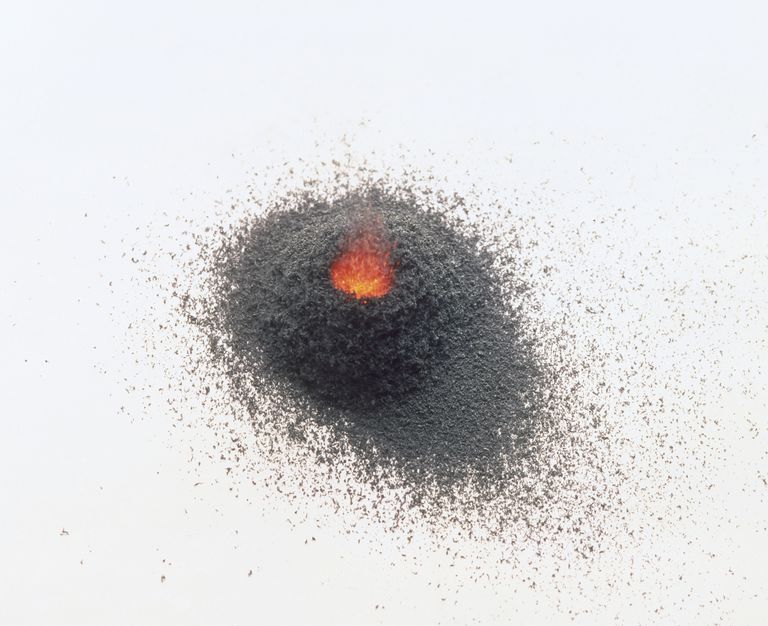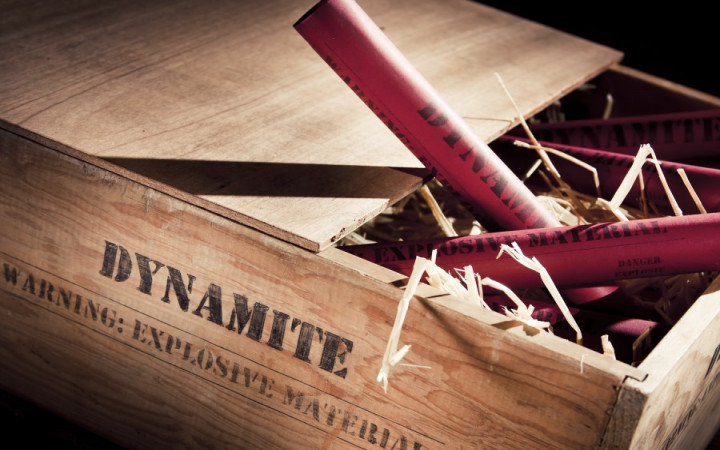|
|
A Brief
History of Chemical Explosives |
|
 Figure 1: (Getty Images, King, 2019)
Figure 1: (Getty Images, King, 2019)Originally invented in China during the 9th century, and widely used in Asia and Europe by the 13th century, black powder is a low explosive consisting of a mixture of fuel (charcoal or sugar), an oxidizer (saltpeter or niter), and sulfer, to allow for a stable reaction. It was used for firework displays, signaling and mining purposes. The carbon from the charcoal plus oxygen forms carbon dioxide and energy. The potassium nitrate, sulfur, and carbon react to form nitrogen and carbondioxide gases and potassium sulfide. The expanding gases provide the propelling action and thus the froce of the explosion. Black powder is considered a low explosive because the speed of the expansion is sub-sonic. Since Blackpowder is such a smokey explosive it was replaced by high explosives and cleaner smokeless powders (Helmenstine, 2019) |
Nitroglycerine Figure 2 Nitroglycerin was discovered by chemist Ascanio Sobrero in 1846. It was the first explosive developed that was more powerful than black powder. It was widely used in mining and construction. It is a mix of nitric acid, sulphuric acid, and glycerol. It is highly reactive and unstable. Several large accidents causing destruction of property and loss of life led to pure liquid nitroglycerin to be widely banned (Bellis, 2019). |
Dynamite  Figure 3 Alfred Nobel patented dynamite in 1867. It is a high explosive that consists of three parts of nitroglycerin, one part diatomaceous earth (ground silica) and a small amount if sodium carbonate antacid as a stabalizer. The mixture is much more stabil than pure nitroglycerin and is much more poweful than blackpowder. Other materials are now used as stabilizers but dynamite is still a common explosive for use in mining and construction (Bellis, 2019) |